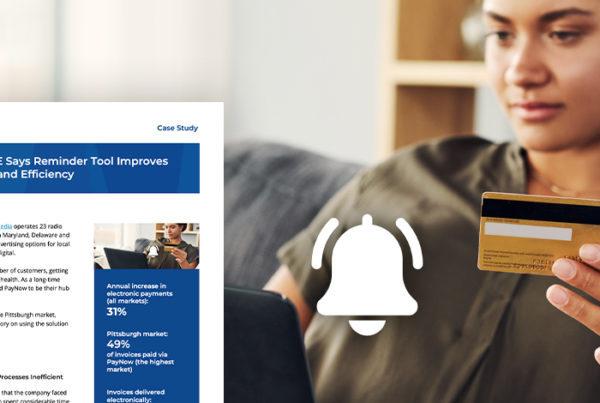 By Todd Kalman
By Todd Kalman
Senior VP of Sales, Marketron
Media organizations adding digital advertising to their sales mix face an interesting question: how should they pay commission on digital advertising sales?

In the pre-digital days, commission was simple. If a salesperson sold a $1000 radio spot deal, the revenue was $1000, and a 15% commission was $150. The math, and the expectations, were clear.
With most media companies adding digital advertising to their portfolio to complement spot ads, things became more complex.
Digital adds a new dimension to commissions.
Digital advertising commission structures are different than linear for several reasons. As a media company, you incur overhead to support digital advertising. You must then decide whether to pay commission on net or gross revenue. You could also have different percentages for different tactics.
Additionally, you’ll need to determine the right percentage to pay for digital sales and how to structure commission across digital products. All of these decisions impact the bottom line, business growth, employee satisfaction and retention and more.
Digital is competitive, so commission structure has added importance.
Selling digital advertising is a competitive business, which makes the answers to these questions all the more critical. Many sellers are pitching digital to local advertisers. Your edge is that you’re local and may have a relationship with them already as a radio customer.
The good news is that more local businesses are buying digital ad campaigns from radio sellers. To succeed in digital advertising sales and displace incumbents, we recommend these four digital sales commission strategies.
1. Pay commission on gross revenue.
Paying commission on gross revenue is simple to calculate and motivates sellers, so it’s a good option for those working to establish and grow their digital business.
Sales teams think about commission in terms of gross revenue. If you pay off net revenue, that number will always be lower than the salesperson’s expectation. This is doubly demotivating. Not only do they have to break out their calculators during every sale to figure out what it’s worth to them, the numbers they get in return also don’t inspire their best efforts.
Keeping salespeople motivated is an outcome of paying on gross revenue.
Sales teams new to the game face a learning curve and likely an existing digital vendor. To overcome these challenges, they need more motivation, not less.
Further, paying on gross revenue incentivizes doing what’s best for the customer. If you pay on gross for radio and net for digital, guess where your sales staff will steer their advertisers?
This undermines the growth of your digital business and hurts overall sales and revenue. Customers won’t renew if they don’t receive solutions that align with their business objectives. Paying on gross for digital products motivates your sales team to do what’s best for the customer.
2. Determine the percentage based on your market and business circumstances.
While there is no “magic number” for what rate to pay on digital sales, we recommend making your digital sales commission rate the same or higher than existing new business and/or direct sales rates.
Start by running the numbers in your back office to understand net profits from digital sales. Keep in mind that digital tactics have various margins depending on the cost of goods. Even if you have to squeeze margins for now, it will pay off once your team establishes the digital business and customer relationships.
If you’re new to digital advertising sales, start high. This goes back to motivating the sales team. You may need to pay a disproportionate percentage for a certain amount of time to incite behavior change.
Remember that this is not forever. You can and should adjust once you have been selling digital for a few years. By that point, sales staff will have more knowledge of how digital advertising works, including the back-end costs, and will likely understand why it’s fair for commission rates to decrease.
Capping commissions makes sense for high-cost campaigns.
You can always cap commissions on individual campaigns if and when it makes sense. With search engine marketing (SEM) and social media campaigns, for instance, a majority of the expense goes to the vendor (like Google or Facebook). As a result, a high commission rate on those sales may not be feasible.
Capping specific instances like SEM and social ensures you don’t end up paying an exorbitant commission that generates more profit for the third-party platform than the broadcaster.
In general, be generous when setting your initial commission percentage. You’re investing in the future. Digital advertising is a necessary business strategy. Like any new venture, it will take some capital to get off the ground. Don’t let short-term math inhibit long-term growth potential.
3. Use a blended digital rate.
Build digital advertising commissions from a blended digital rate versus using different rates for each digital product or tactic.
Per tactic rates increase complexity and can demotivate sales teams. Optimization efforts can affect per-tactic rates as an advertiser’s product mix adjusts based on performance. If that happens mid-campaign, and you use a per-tactic rate, the commission suddenly changes.
Sales staff then believe (accurately) that they can’t rely on their projections, and their income becomes more unpredictable. That scenario leads to indifferent employees and potentially increased turnover.
Different commission rates for tactics can also encourage sales staff to recommend tactics with higher rates instead of advocating for what’s best for the customer. As noted, this short-sighted approach leads to negative long-term consequences. Advertisers may eventually leave to find a digital advertising partner that will put their needs first.
4. Increase commission on renewals.
Finally, incentivize renewals instead of new business to motivate sales teams to do what’s right for the customer.
Many organizations offer higher commission rates on new business. We recommend incentivizing renewals instead. Increasing commission on renewals will encourage sales staff to present the right products and strategies and follow through on their execution. This approach proactively reduces customer attrition by giving sales teams a concrete reason to deliver on their promises and outperform the competition.
It costs much more to attract and win new business than to keep current customers. These customers will remain loyal as long as you’re taking care of them. When they decide to invest more in advertising, they’ll come to your sellers.
Get More Insights on Digital Sales Commission and Compensation
Setting commissions and compensation is unique for every media company. You have to consider many factors each year to define these. It impacts your ability to grow revenue, hire new talent and retain high performers.
Check out our new Ultimate Guide to Digital Sales Compensation for Media Companies for more information on models. Then use our digital sales commission and margin calculator to test out different models!






